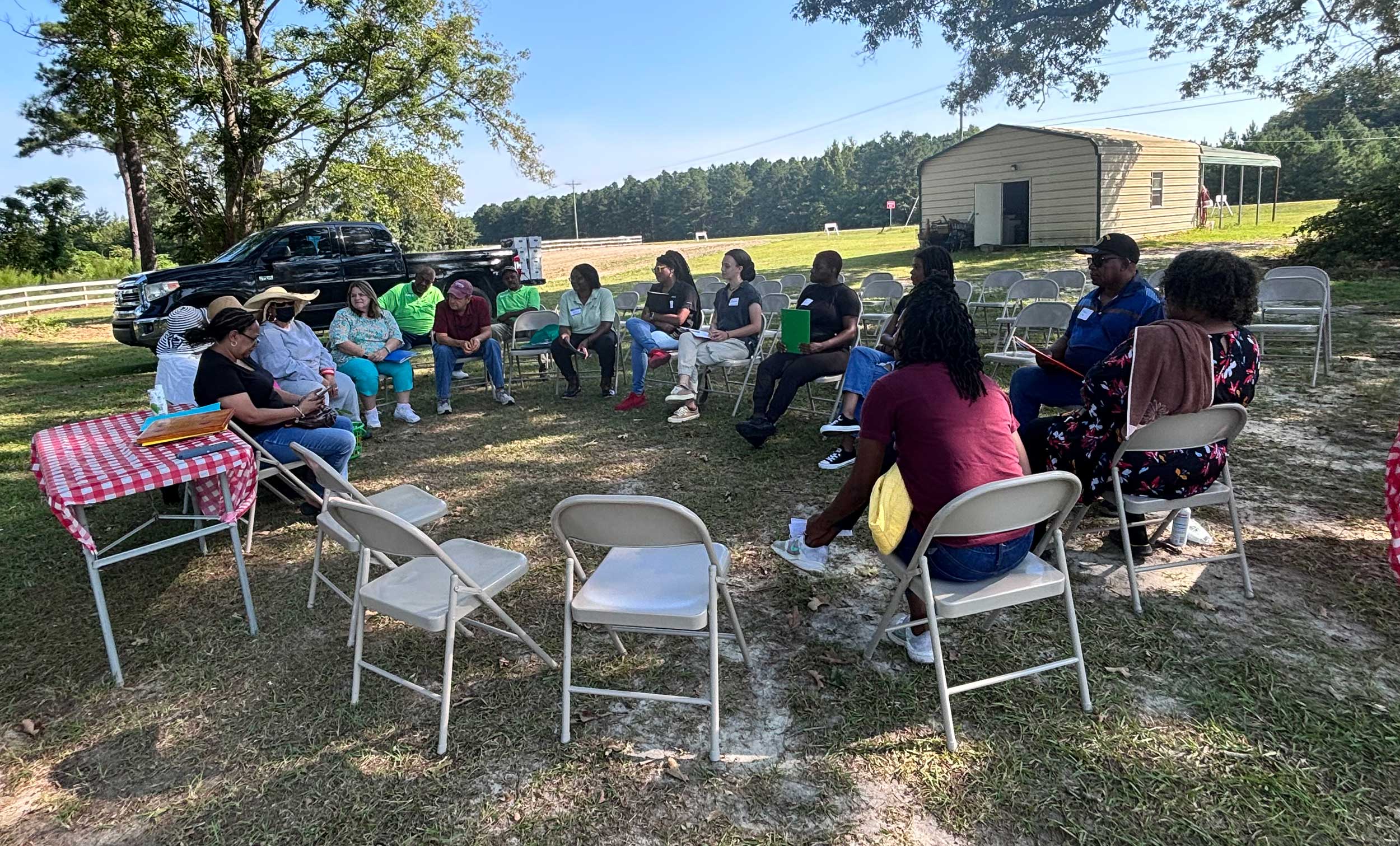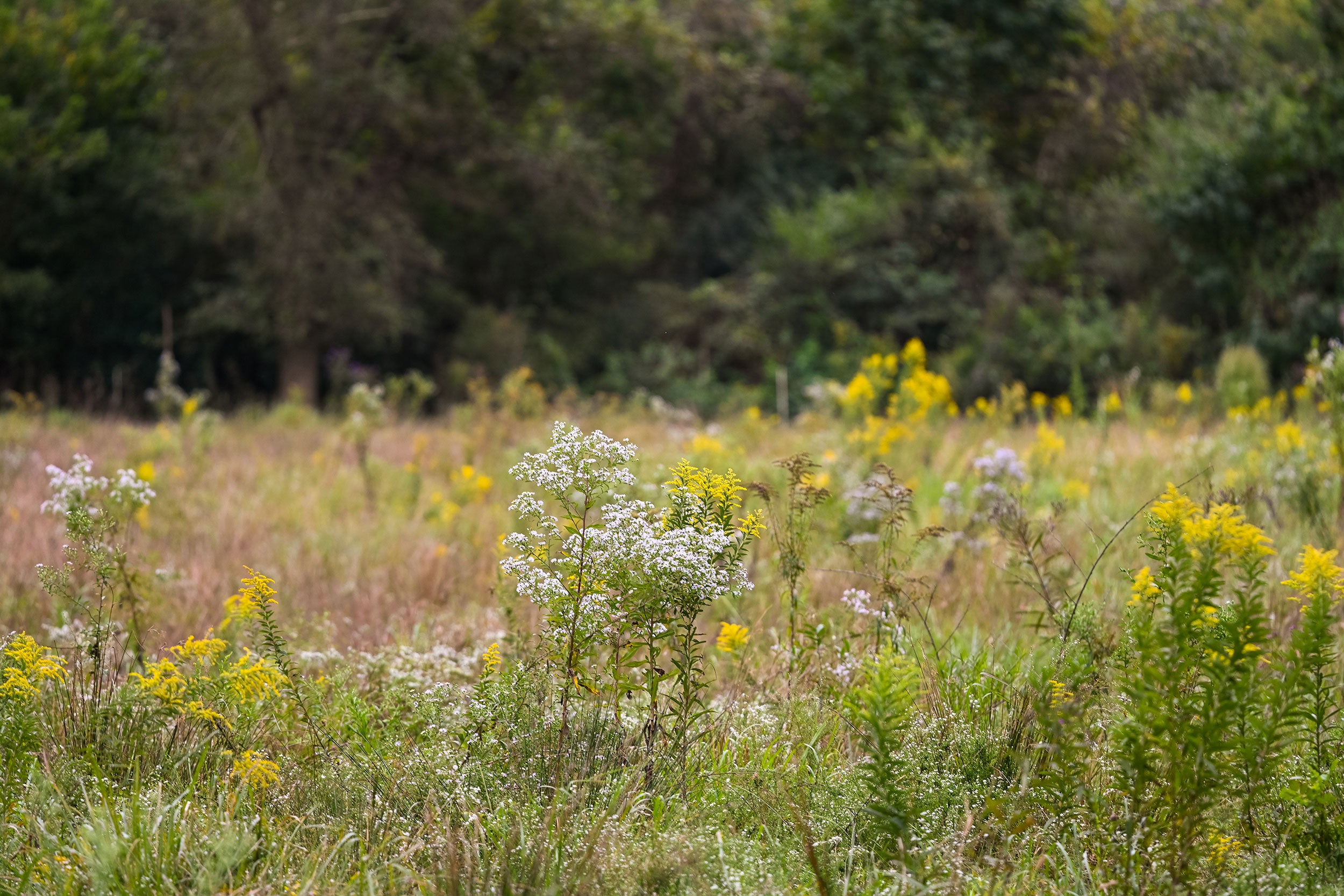For many families, farmland is more than property — it is a legacy. Yet, the complex issue of heirs’ property threatens this inheritance, particularly in rural communities across the Southeastern United States. To tackle this challenge, American Farmland Trust’s Women for the Land team hosted a Learning Circle at Clark’s Produce in Tar Heel, North Carolina. This gathering brought together over 30 farmers, landowners, and community leaders to tackle a critical issue: Heirs’ Property. With a blend of education, peer-to-peer learning, and actionable insights, the event shed light on a challenge that threatens farmland preservation and generational wealth.
What is heirs’ property?
Heirs’ property arises when land is passed down without a formal will or clear title, resulting in shared ownership among multiple heirs. This fragmented structure creates significant challenges, such as restricted access to federal programs, loans, or conservation initiatives, and increased vulnerability to land loss through forced sales or disputes.
In North Carolina and beyond, heirs’ property disproportionately impacts Black, Indigenous, and other underserved farming communities, highlighting its role as both a legal and equity issue. According to research from the Federation of Southern Cooperatives, heirs’ property disproportionately impacts Black farmers, with an estimated 60% facing unclear land ownership issues. This challenge underscores the urgent need for awareness and resources to protect generational wealth and land tenure. Without intervention, families risk losing their land, eroding cultural heritage, and weakening local food systems.

The Women for the Land Learning Circles are designed to create peer-to-peer spaces for women in agriculture to share their experiences and expertise in the field, while also connecting them with resources to overcome barriers. The learning circle at Clark’s Produce began with name tags and icebreakers, setting a tone of openness and mutual respect. Attendees shared their challenges with heirs’ property and exchanged ideas for resolving them. This session also marked a unique milestone, as a higher-than-usual number of male participants attended, highlighting the broad relevance of the issue across families and communities.
One participant remarked, “I learned a few next steps to take to ensure my land is passed down to the next generation of farmers.” Another shared their gratitude, saying, “I learned a lot that I can discuss with my mama and her siblings to begin to resolve our heirs’ property.”
A focus on education and action
The learning circle emphasized practical solutions and collaboration. Discussions ranged from legal strategies to family communication techniques, providing actionable insights for participants to implement.
Clark’s Produce itself served as a source of inspiration. A tour of the farm allowed attendees to envision how proper land stewardship and clear ownership can sustain agricultural productivity and legacy. The day also served as an opportunity to share Women for the Land’s new guide, “Preserving Legacy: Securing Agricultural Land Ownership in North Carolina Through Legal Protection,” which emphasizes estate planning, legal clarity, and community support as critical tools for maintaining farmland as a family asset.
“A lot of people asked for information about what they need to do to save their land,” said Nicole Gwishiri, Senior Manager for Women for the Land’s Southeast Program and co-author of the report. “While there is a lot of information out there, we wanted to make sure it was tailored to our participants, as well as it was easy to understand. We wanted to provide relief for a very emotional, and often controversial topic to families we work with.”
Heirs’ property issues are deeply intertwined with social and historical contexts. The lack of clear land titles often stems from systemic barriers that have disproportionately affected marginalized communities. Addressing these challenges requires a combination of education, advocacy, and policy change.
Organizations like the Federation of Southern Cooperatives and the Black Family Land Trust are leading the way by offering resources, legal support, and community engagement. For example, the Federation’s Legal Internship Program trains attorneys to specialize in heirs’ property cases, while national conferences provide platforms for landowners to collaborate and learn.
The learning circle at Clark’s Produce was a powerful reminder of the importance of community-based solutions. By fostering dialogue, providing tools, and building trust, the event empowered participants to take meaningful steps toward resolving heirs’ property challenges.
If you or someone you know is navigating heirs’ property issues, consider exploring resources like American Farmland Trust’s guide, “Preserving a Legacy,” which offers actionable advice on estate planning and land retention. Additionally, connecting with organizations like the Black Family Land Trust or the Federation of Southern Cooperatives can provide valuable support.

The fight to preserve family farmland is about more than property — it’s about safeguarding heritage and ensuring a future for generations to come. By addressing heirs’ property issues, communities can protect their legacies and strengthen the foundations of rural agriculture.
For more insights and resources, visit American Farmland Trust’s “Preserving a Legacy” and learn how you can take steps to secure your family’s land. To learn more about the work that American Farmland Trust is doing with heirs’ property, check out this in-depth report from the Farmland Information Center.



